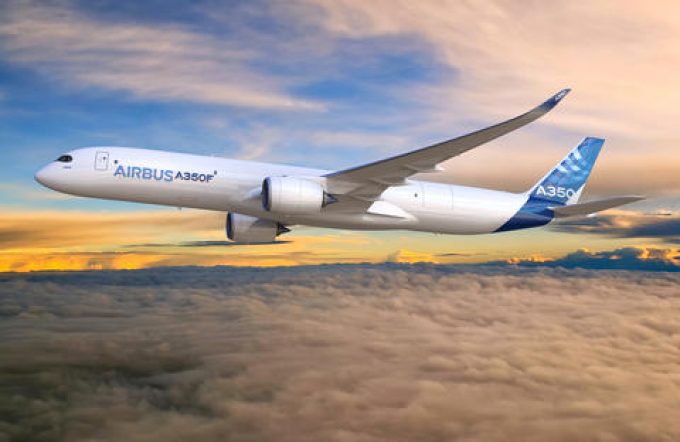Forwarders trust us to be independent, says CMA CGM Air chief Mazaudier
“Forwarders trust us,” insisted Damien Mazaudier, CEO of CMA CGM Air Cargo. “The market is ...

News that Atlas Air is considering becoming an Airbus operator for the first time marks a major change in the industry.
Boeing – which has myriad problems right now – is losing its almost-monopolistic position in freighters – but that leaves freighter operators like Atlas examining whether they want to be a two-manufacturer operator.
Atlas told Bloomberg it was in “relatively advanced stages” of talks with both Boeing, for the 777-8F, and Airbus, for its new A350F. But reportedly, Atlas has concerns over the delivery schedule – particularly with Boeing, which initially said its 777-8Fs could deliver in 2027. Airbus expects to launch its A350F in early 2026.
Atlas’s public musings could be a ploy to get Boeing to reduce its prices; Atlas has always been known as a canny negotiator. And to take on an Airbus aircraft would involve more pilots and pilot training, new maintenance options and so on, while Atlas already operates five 777Fs.
On the other side of the coin, Airbus is finally making inroads into the market. In July, it had no market share in large freighters. Now, it has 50%, after a strong six months in which it took orders for 55 aircraft from 10 customers, including Singapore Airlines, Air France, Martinair, Cathay Cargo, Etihad and Silk Way West.
“We are very happy, we’ve been building up our market share,” said Crawford Hamilton, head of freighter marketing. “Ten customers is brilliant. We’re here for the long-haul in freight. It’s one of the big strategic objectives of Airbus.”
According to Mr Hamilton, one of the big strengths of the A350F is that it is comparable with the 747F, which is now out of production.
“Most people don’t believe it, but it’s the same loadable volume as a 747F,” he told The Loadstar on the sidelines of IATA’s WCS in Hong Kong last week.
“It can fly six aircraft engines and heavy pallets of up to 28 tons over the wing box. Really, we think we’ve got something pretty special. We’ve also raised the take-off weight from 109 tons to 111 tons.”
Perhaps most importantly for those operators concerned over the impending loss of the 747 is the extra-large cargo door. Designed for large engine transport, it is 4.32m wide, as opposed to 3.72m for the 777 variants.
While the A350F will be easier to sell to airlines such as Cathay, which already operates the passenger variant, it will be a harder sell for freighter operators like Atlas, which has steadfastly stuck to Boeing – and Boeing-trained pilots – over the years.
And pilot shortage is still an issue. Cathay Pacific, for example, is thought to be about 100 pilots short. One of Cathay Cargo’s 747F pilots told The Loadstar that, although Airbus looked attractive to fly, he didn’t want to start over and was going to stick with his Boeing freighter. Another, who operates the A350 already, said he was happy with the aircraft – but in fact wanted to quit being a pilot. Airbus meanwhile said its A350F was much better for crew and couriers: “21st century” and “even has windows”.
Another problem for operators like Cargolux, which has just one type in its fleet, is the added complexity.
“A one-type fleet has been one of our biggest advantages,” CEO Richard Forson told The Loadstar in 2022. “Having just 747s has given us extreme flexibility – we can switch aircraft easily. But with a mixed fleet, we’ll need to break down pallets to switch aircraft, and that will bring an additional layer of complexity to our operations, and will waste time.
“But, going forward, we will need to have a mixed fleet type for 10 to 15 years.”
It has now ordered 10 777-8Fs, with an option for six more. Mr Forson had said emissions would be one of the key factors in the decision, and ultimately decided the difference between the A350F and 777-8 was negligible.
Airbus, however, claims the A350F has 10% to 15% less fuel burn than the 777-8, 20% lower than the 777F and 40% lower than a 747-400F.
Part of the decision to opt for Airbus could be the production timeline. Boeing’s well-documented difficulties, in particular its quality control, may set back its production schedules, while Airbus is nearly ready to roll.
But there are also issues in the aerospace supply chain that are affecting all manufacturers.
“There have been a lot of issues post-Covid, mostly to do with skill levels,” explained Mr Hamilton. “It is starting to look better now, but there are still problems, and still aircraft that are being delivered late. Some of the missing parts may be seller-furnished equipment for us, or buyer-furnished equipment for the airline, things like seats.
“Part of the problem was during Covid, where staff at suppliers took early retirement packages. So that means they’ve got to hire new people, and the new people have got to learn a new job. It’s definitely the end of the beginning and, hopefully, it’s the beginning of the end of the problems.
“We have a whole bunch of people in procurement who are looking at this 24/7 to make sure there are no hold-ups. But if there are going to be things holding you up, then know what they’re going to be and make sure there’s no surprises. Because the last thing we want is surprises.”
Atlas already has 85 aircraft in service. The average age of its 747s is more than 20 years, and it also wants to expand its fleet – so a decision will have to be made soon.
It’ll be a fascinating choice.
Comment on this article